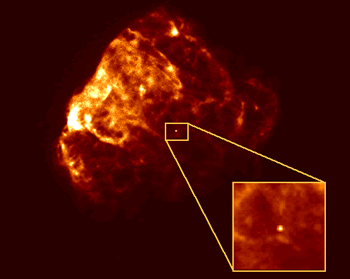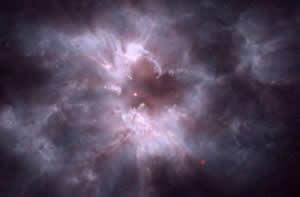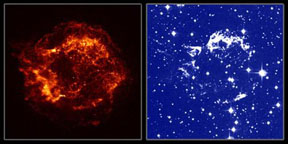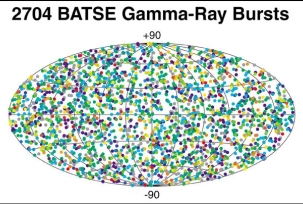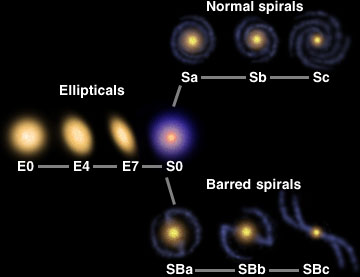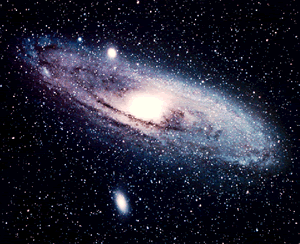Click on image for full size
ROSAT satellite image courtesy of NASA
Related links:
Neutron Stars
Neutron Stars are the end point of a massive star's life. When a really massive star runs out of nuclear fuel in its core the core begins to collapse under gravity. When the core collapses the entire star collapses. The surface of the star falls down until it hits the now incredibly dense core. It then rebounds off the core and blows apart in a type IIa supernova. The core tries to resist gravity with the quantum mechanical electron pressures that hold white dwarfs together. But that will not work here; gravity is just too strong because the density is very very high. Electrons in orbit of protons in normal atoms collapse into the nucleus and form neutrons. Now the star is almost completely made of neutrons and their quantum mechanical pressures are enough to resist gravity.A typical neutron star is the size of a small city, only 10 Kilometers in diameter but it may have the mass of as many as three suns. It is quite dense. One spoonful of neutron star material on Earth would weigh as much as all the cars on Earth put together.
Some neutron stars spin quite rapidly and have very strong magnetic
fields. If the magnetic poles are not lined up with the star's rotation
axis then the magnetic field precesses around at an alarming rate. Charged
particles can get caught up in the magnetic fields and beam away
radiation along cones near the magnetic poles, kind of like a lighthouse
beacon. This type of neutron star is called a pulsar. Pulsars are detected
by their rapidly repeating radio signals beamed at Earth from those
charged particles trapped in the magnetic field. When they were first
discovered it was thought that they were radio signals from "Little Green
Men" from outer space. Weird.


